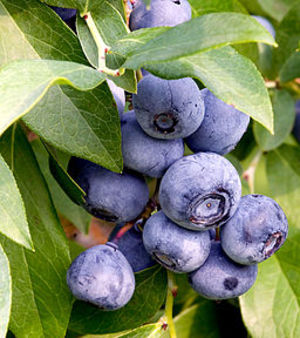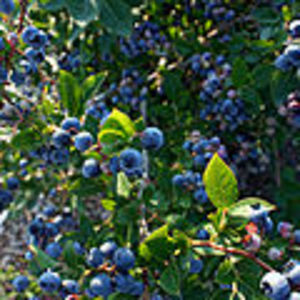In foodie circles, blueberries are all the rage. Delicious and nutritious, they’re full of those much-sought-after antioxidants called anthocyanidins, as well as bountiful amounts of vitamin C and fiber.
What many California gardeners may not know is that certain varieties of blueberries grow quite well on the Central Coast, despite some people’s perception that the bushes only thrive in cold-weather areas.
All you have to do is look for the right kinds of blueberry plants, pay attention to their soil and water requirements, and they’ll do just fine.
More and more people are realizing that they can grow blueberries here,” said Mark Vanderkarr, nursery manager for Valley Hills Nursery in Carmel Valley, California. Blueberries can be purchased either as container plants or bare-root plants.
Not only do blueberry plants give you blueberries, they also make a nice-looking addition to most yards. They flower in the spring, producing white or pink bell-shaped blossoms that will turn into berries later in the year, and some varieties also produce striking fall color when their leaves turn a pretty crimson.
Blueberry plants also are long lived — they can survive 20 years or more — and can be prolific producers of fruit, even yielding two harvests during the year.
They also do well as container plants, said Vanderkarr, but need a fairly large container — something that is at least 12 to 16 inches wide across the top of the container. The rounded, compact blueberry bush will grow to be about 3 feet across, and from 3 to 5 feet in height.
When shopping for your blueberry bush, look for what are called southern highbush varieties. These are blueberry cultivars that don’t need a lot of cold weather in order to produce blossoms. These low-chill-requirement varieties are well suited to coastal California.
Some of the varieties carried by Valley Hills Nursery are “Misty,” “Sharp Blue,” and “Pink Lemonade,” a type with berries that are pink when ripe, rather than blue.
The Master Gardeners of Santa Clara County ran a trial a few years ago to see what blueberry varieties would do well in Central California; they found that “Georgia Gem,” “Gulf Coast,” “Reveille,” “Sunshine Blue” and “Top Hat” were reliable producers, in addition to the types mentioned above. “Top Hat” is a dwarf variety that is especially well suited to being grown in containers or planter boxes; “Reveille” is considered an especially easy-to-grow variety that does well in both hot summer areas and cool coastal climates.
However, there is one very important thing to keep in mind about blueberries: They won’t do well unless the soil has an acid pH, somewhere in the 5.0 to 5.5 range, according to the University of California Cooperative Extension. And most California soils tend to be quite alkaline.
In order to keep your blueberry plant happy, you’ll need to give it the acid it craves. Vanderkarr recommends mixing peat moss and some planting mix into the soil before planting; other authorities advise applying a little sulfur. Blueberries prefer a little acid-based fertilizer, but not too much, and will benefit from some compost being added to the soil.
Because of the soil requirements, Vanderkarr said container growing is a simpler proposition; raised beds would also work.
Blueberry bushes prefer well-drained soil but should be watered at least once a week when established, or more frequently if in containers. Much like any other fruit-bearing plant, they may need extra water, especially during the dry summers, to bear the best berries.
Blueberries are self-fertile, but if you plant more than one variety, it will help increase pollination and you’re likely to get more fruit that way.
Plant your blueberries in a sunny spot – they’ll need at least six hours of sunlight each day, according to UCCE – and may need a little afternoon shade in hotter areas.
You will also want to protect your precious plants from marauding deer and birds, so when the berries develop, be sure to protect the plants with netting or a wire barrier.



